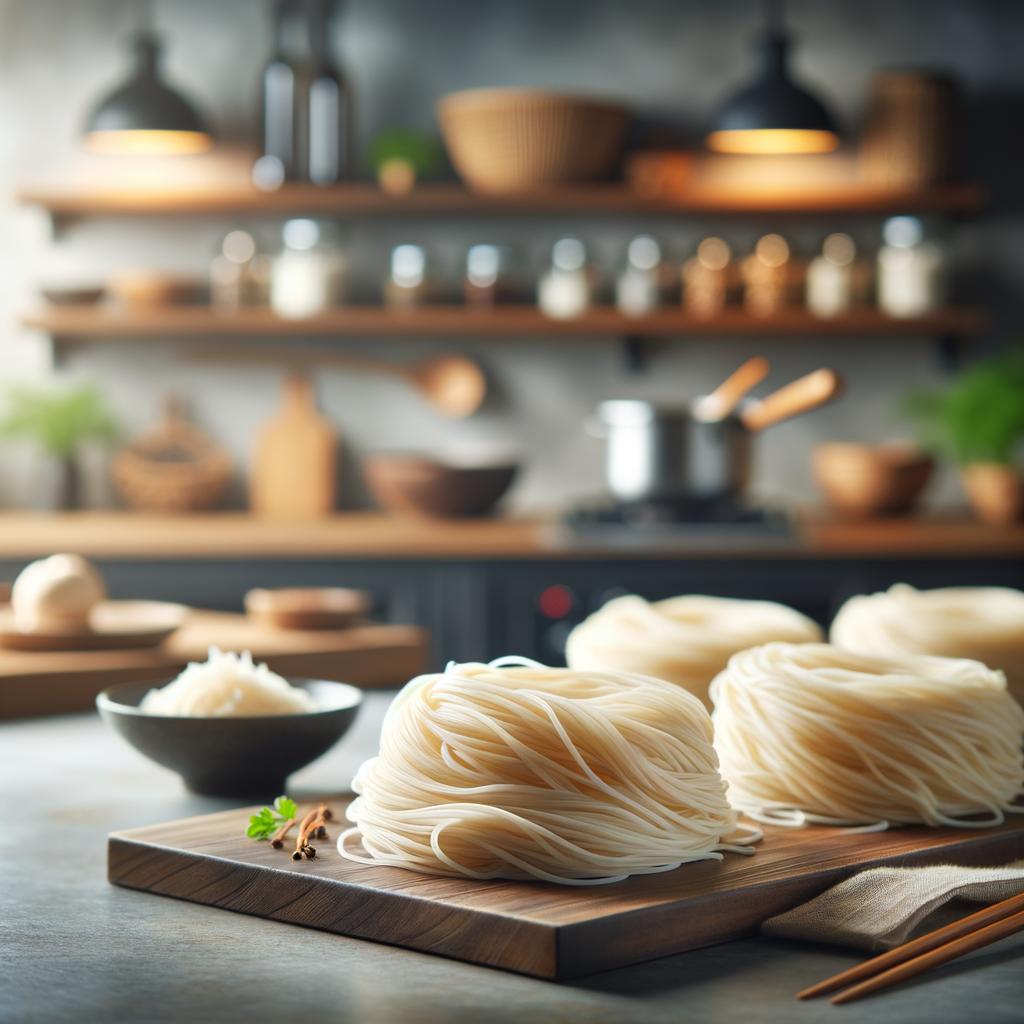Wide Rice Noodles

Description
Wide rice noodles, also known as Ho fun, are a staple ingredient in the culinary world. They are broad, flat, and white, resembling a delicate ribbon in appearance. When cooked, their texture is soft yet chewy, providing a satisfying mouthfeel that is both comforting and delightful. Their flavor profile is neutral, making them a versatile ingredient that absorbs and complements the flavors of sauces, spices, and other ingredients it is paired with. What sets wide rice noodles apart from other types of noodles is their gluten-free nature, making them a popular choice for those with dietary restrictions.
Primary Uses
Wide rice noodles are a beloved component in various cuisines, particularly in Asian cooking. They are the star of the show in dishes like Pad See Ew, a Thai stir-fry, and Beef Chow Fun, a popular Cantonese dish. These noodles are also commonly used in soups, salads, and spring rolls. Beyond their culinary uses, wide rice noodles carry cultural significance in many Asian countries, where they are often served during celebrations and festivals as a symbol of longevity and good luck.
History
The history of wide rice noodles is as rich and textured as the noodles themselves. Originating in China, these noodles have been a part of the culinary landscape for centuries, their popularity spreading across Southeast Asia with the migration of Chinese communities. Over time, they have become a staple in many regional cuisines, each adding their unique twist to the humble rice noodle. There's a charming folklore in Thailand that says the wider the noodle, the wider the smile of the person who eats it – a testament to the joy these noodles bring to the dining table.
Nutritional Information
Nutritionally, wide rice noodles are a good source of energy, providing carbohydrates needed for daily activities. They are low in fat and contain minimal amounts of protein. Being gluten-free, they are an excellent alternative to wheat-based noodles for those with gluten sensitivities or celiac disease. However, it's worth noting that while they are lower in fiber compared to whole grain noodles, their mild flavor and versatile nature make them a useful ingredient in creating balanced, nutritious meals when paired with protein, vegetables, and healthy sauces.

